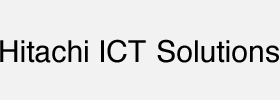
This assessment applies to JP1/Client Process Automation V12.1 and later.
The specifications described might be changed without prior notice because of product improvement, etc.
The factors related to the burden on the environment differ depending on the assessment conditions or the assessment model.
This assessment used SI-LCA(*1), which is Hitachi, Ltd.'s method for calculating CO2 emissions. This assessment was calculated using information as of February 2020 and using the usage stage as the assessment target.
*1SI-LCA (System Integration-Life Cycle Assessment): This conforms to "FY2005 Eco-Efficiency Assessment Guideline for Information and Communication Technology (ICT)" issued by the Japan Environmental Efficiency Forum (currently Life Cycle Assessment Society of Japan) in March 2006.
CO2 emissions: Reduction per year = 3,864 kg of CO2. CO2 reduction rate = 42%

- Factors that reduce the burden on the environment
- Reduction in work hours (42%)
- Reduction in power consumption (42%)
- Factors that increase the burden on the environment
- In the use stage, no factor increases the burden.
New Challenges
Businesses of various types and sizes, including the manufacturing industry, transportation industry, restaurant business , and others by utilizing IT.
JP1/Client Process Automation (JP1/CPA) is a product that automates work done with robotic process automation (RPA) products, data aggregation with manual work using spreadsheet software, and routine work done on PCs, such as sending and receiving files and emails as sequences of processes including preparatory work or post-processing. Even without advanced coding skills, standardization of procedures and automated operations are possible by simply making definitions that link items prepared in advance to execute "when," "what," and "in what order." With this, reworking and mistakes are prevented, working time is shortened and the quality and efficiency of routine work done on PCs are improved. The introduction of JP1/CPA in ten divisions in the company decreased the energy consumed in 354,320 instances annually, as data input and recovery work when errors occur are automatically processed . In addition to this, worker-hours were decreased and CO2 emissions were cut by about 42% (3,864 kg-CO2/year) compared with before the introduction of the system.
How JP1/CPA is helping the society/environment
Reduction in the work hours required for recovery of processing errors
Reduction in the power consumption of IT devices
Reducing its electricity consumption
Automating the sending of reminder and follow-up emails and the checking of submission statuses for the company
Choosing the right CPA fit
With JP1/Client Process Automation, you can control the execution schedule as well as the execution order of regular business processes performed on a PC (including processes performed by using RPA products).
Organizations can benefit from the reduction of work hours that were once used for these processes and benefit from the quality of work produced by these tools. In a case study done by Hitachi, an organization managed to cut energy consumed by about 42 percent after adopting JP1, saving cost and the environment.
Read more about how JP1 can help you effectively utilize RPA tools that enhance your organization’s efficiency and benefit the environment.
Do share our blog post if you know someone who might be interested!



